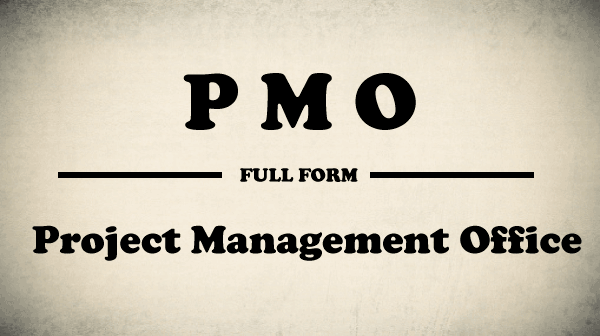A PMO, or project management office, is a centralized unit within an organization that provides guidance, support, and oversight to project managers. PMOs can vary in their structure, size, and responsibilities.
- Introduction : PMO full form
- Roles and Responsibilities of a PMO: PMO full form
- Performance: PMO full form
- Functions: PMO full form
- Risk Management in PMO: PMO full form
- Monitoring and Reporting: PMO full form
- Services : PMO full form
- Types of PMOs: PMO full form
- Establishing a PMO
- PMO Framework and Processes
- Benefits of a PMO
- Challenges and Solutions
- Conclusion
- FAQs
Introduction to PMO

Definition and Purpose: At its core, a Project Management Office (PMO) is a centralized organizational structure that oversees and supports project management efforts. It provides the framework, practices, tools, and governance necessary to facilitate effective project execution. The PMO acts as a nucleus, orchestrating project activities, aligning them with organizational goals, and fostering collaboration among stakeholders.
Importance in Project Management: In a landscape where projects are diverse, interdependent, and subject to various challenges, the PMO emerges as a unifying force. Its role extends beyond administrative tasks; it champions project success by enforcing consistency in processes, mitigating risks, optimizing resource allocation, and ensuring that projects are delivered on time, within scope, and within budget. The PMO creates an environment of accountability, transparency, and efficiency that permeates the entire project lifecycle.
As the journey into the realm of PMOs unfolds, the subsequent sections will delve deeper into the roles, types, establishment, benefits, challenges, and the evolving landscape of Project Management Offices. Through this exploration, a comprehensive understanding of the transformative impact that PMOs wield in the realm of project management will be unveiled.
Roles and Responsibilities of a PMO
1. Project Governance and Oversight: The PMO acts as a governance body, ensuring that projects adhere to organizational standards, policies, and best practices. It establishes guidelines for project initiation, prioritization, and resource allocation, maintaining a clear line of sight between project portfolios and strategic objectives.
2. Standardizing Processes and Best Practices: A crucial role of the PMO is to define and enforce standardized project management processes and methodologies. It establishes templates, tools, and procedures that streamline project execution, enhancing consistency and reducing the risk of errors.
3. Resource Management and Allocation: The PMO plays a pivotal role in resource allocation, ensuring that the right people with the right skills are assigned to projects. It optimizes resource utilization across projects, mitigating resource conflicts and bottlenecks.
4. Risk Management and Issue Resolution: Identifying potential risks, assessing their impact, and devising mitigation strategies are integral to the PMO’s responsibilities. It facilitates proactive risk management and provides a platform for resolving issues that may arise during project execution.
Performance: PMO full form
Achievement of Strategic Goals
Key Metrics: Alignment with organizational approach, contribution to enterprise targets, a hit shipping of strategic tasks.
Evaluation: Assess how well the PMO’s tasks make a contribution to the general strategic dreams and objectives of the organization.
Project Delivery and Success Rate
Key Metrics: Percentage of projects introduced on time, inside price range, and to scope; success charge of projects.
Evaluation: Review project completion quotes, adherence to timelines, price range control, and whether or not the deliverables meet the defined scope and quality requirements.
Resource Utilization and Allocation
Key Metrics: Resource usage costs, capability making plans accuracy, efficiency in useful resource allocation.
Evaluation: Measure how effectively assets are allocated and applied across initiatives. Evaluate the efficiency of aid planning and the effect on task overall performance.
Risk Management Effectiveness
Key Metrics: Number and impact of recognized risks, effectiveness of risk mitigation techniques, threat reaction times.
Evaluation: Analyze how well the PMO identifies and manages dangers. Review the effectiveness of risk mitigation moves and their effect on undertaking effects.
Stakeholder Satisfaction
Key Metrics: Stakeholder comments, pride surveys, stage of stakeholder engagement.
Evaluation: Gather and determine remarks from stakeholders regarding the PMO’s overall performance, communication, and assist. Measure stakeholder pride stages and become aware of areas for improvement.
Process and Methodology Adherence
Key Metrics: Compliance with hooked up processes and methodologies, adherence to PMO standards, manner development metrics.
Evaluation: Check compliance with standardized assignment management procedures and methodologies.
Functions: PMO full form
| Function | Description | Key Activities | Benefits |
|---|---|---|---|
| Standardization | Develops and enforces project management standards and methodologies. | Establishing guidelines, creating templates, and standardizing processes. | Ensures consistency and quality across projects. |
| Governance | Implements and manages governance structures to monitor and control project performance. | Setting up governance frameworks, defining roles and responsibilities, and overseeing compliance. | Provides oversight and accountability for projects. |
| Support | Provides resources and assistance to project managers and teams. | Offering training, tools, and advisory services to support project execution. | Enhances project manager effectiveness and efficiency. |
| Monitoring and Reporting | Tracks project progress and performance, providing regular updates to stakeholders. | Collecting performance data, generating reports, and analyzing project metrics. | Facilitates informed decision-making and transparency. |
| Resource Management | Manages and allocates resources effectively across projects. | Resource planning, scheduling, and optimization. | Ensures optimal resource utilization and reduces conflicts. |
| Risk Management | Identifies, assesses, and mitigates risks to ensure project success. | Conducting risk assessments, developing mitigation strategies, and monitoring risk factors. | Minimizes the impact of potential issues on projects. |
| Portfolio Management | Oversees the organization’s project portfolio to align with strategic goals. | Evaluating project proposals, prioritizing projects, and managing project portfolios. | Ensures alignment with organizational strategy and goals. |
| Continuous Improvement | Reviews and improves project management processes and practices. | Analyzing performance, implementing best practices, and refining processes. | Enhances overall project management effectiveness. |
Risk Management in PMO: PMO full form
Risk Identification: The PMO systematically identifies potential dangers that would impact challenge results. This involves collecting input from undertaking groups, stakeholders, and analyzing challenge plans.
Risk Assessment: Risks are assessed in phrases of their probability and capability effect. The PMO evaluates the severity of every hazard to prioritize them successfully.
Risk Mitigation Planning: For each identified chance, the PMO develops and implements mitigation techniques. This entails creating motion plans to reduce the possibility or impact of the hazard.
Risk Monitoring: The PMO continuously video display units diagnosed dangers and tracks new risks during the project lifecycle. This includes regular evaluations and updates to the threat management plan.
Risk Reporting: The PMO presents normal risk reviews to stakeholders and senior management. These reports detail modern-day chance statuses, mitigation efforts, and any modifications in threat profiles.
Risk Response Management: When risks materialize, the PMO coordinates the response efforts. This includes executing the hazard reaction plans and addressing any issues right away to limit effect.
Lessons Learned and Improvement: After hazard activities or task of completion, the PMO opinions and files lessons found out. This comments is used to improve destiny risk control techniques and techniques.
Monitoring and Reporting: PMO full form
| Aspect | Description | Key Activities | Benefits |
|---|---|---|---|
| Performance Tracking | Monitoring project progress against plans and objectives. | Tracking milestones, deliverables, and key performance indicators (KPIs). | Provides insight into project status and helps ensure alignment with goals. |
| Data Collection | Gathering relevant data to assess project performance. | Collecting data from project management tools, team updates, and performance reports. | Ensures accurate and comprehensive performance evaluation. |
| Progress Reporting | Regularly updating stakeholders on project status. | Preparing and distributing status reports, dashboards, and project summaries. | Keeps stakeholders informed and engaged. |
| Variance Analysis | Analyzing deviations from the project plan. | Comparing planned vs. actual performance, analyzing variances, and identifying root causes. | Identifies issues early and supports corrective actions. |
| Issue Reporting | Documenting and communicating project issues and their resolutions. | Logging issues, tracking resolutions, and reporting on issue status and impacts. | Provides transparency and facilitates problem resolution. |
| Forecasting | Predicting future project performance based on current data. | Analyzing trends, projecting future performance, and adjusting forecasts as needed. | Helps in proactive decision-making and planning. |
| Compliance and Audit | Ensuring that projects adhere to standards and regulations. | Conducting audits, verifying compliance with procedures, and reporting findings. | Ensures projects meet required standards and regulations. |
Services : PMO full form
Project Management Methodology Support: The PMO develops and continues standardized mission management methodologies, equipment, and templates to make sure consistent practices across initiatives.
Project Planning and Coordination: Provides aid in task planning, which includes the improvement of undertaking plans, schedules, and resource allocation, ensuring that initiatives are well-coordinated and aligned with organizational desires.
Training and Development: Offers schooling packages and development opportunities for mission managers and group contributors to enhance their capabilities in venture management practices and tools.
Resource Management: Assists in the allocation and optimization of sources across tasks, which include personnel, system, and price range, to maximize performance and effectiveness.
Risk Management: Facilitates the identity, evaluation, and mitigation of dangers at some point of the assignment lifecycle, assisting to reduce capacity problems and influences on undertaking fulfillment.
Performance Monitoring and Reporting: Tracks undertaking overall performance towards goals and provides ordinary reviews to stakeholders, together with development updates, overall performance metrics, and difficulty resolutions.
Governance and Compliance: Ensures that initiatives adhere to organizational guidelines, standards, and regulatory requirements, offering oversight and governance to maintain high-quality and compliance.
Types of PMOs
1. Supportive or Informative PMO: This type of PMO primarily serves as a resource hub for project teams. It provides templates, guidelines, best practices, and training to enhance project management practices. The supportive PMO offers guidance and expertise, but it doesn’t have direct control over projects. Its focus is on knowledge sharing and assisting project managers in their roles.
2. Controlling PMO: A controlling PMO takes a more active role in project management. It standardizes processes, methodologies, and reporting across projects. This type of PMO monitors project performance, enforces compliance, and ensures that projects adhere to established guidelines. It provides project managers with the tools and frameworks needed to achieve consistent project outcomes.
3. Directive PMO: A directive PMO exercises a high level of control over projects. It not only defines processes and methodologies but also actively manages projects. This includes resource allocation, project prioritization, and even direct involvement in project execution. The directive PMO ensures projects are aligned with organizational strategies and that they meet specific goals and milestones.
4. Adaptive or Agile PMO: An adaptive PMO is designed to support organizations that embrace agile methodologies. It provides a flexible framework that aligns with agile practices, allowing teams to work collaboratively, iterate, and respond to changes quickly. This type of PMO promotes agility while ensuring projects are aligned with business objectives.
Establishing a PMO
1. Identify the Need for a PMO: Begin by assessing your organization’s project management challenges, gaps, and opportunities. Determine whether a PMO is necessary to enhance project outcomes, improve resource utilization, and align projects with strategic goals.
2. Define Goals and Objectives: Clearly articulate the goals and objectives of the PMO. Are you aiming to standardize processes, improve project visibility, enhance communication, or achieve a combination of these goals? Defining clear objectives will guide the PMO’s activities and align them with organizational priorities.
3. Select the Right PMO Model: Choose a PMO model that aligns with your organization’s needs and project management maturity. Decide whether you need a supportive, controlling, directive, or adaptive PMO based on the level of control and guidance required.
4. Build the PMO Team: Assemble a team of skilled professionals to staff the PMO. This team may include project managers, analysts, subject matter experts, and change management specialists. Their expertise will be essential in driving the PMO’s initiatives.
PMO Framework and Processes
A well-defined framework and processes lie at the core of a successful Project Management Office (PMO). They provide the structure and guidelines that ensure consistent project execution, streamlined communication, and alignment with organizational goals. Here’s a closer look at the PMO framework and key processes:
1. Project Initiation and Planning: The PMO plays a vital role in the initiation and planning stages of projects. It assists project managers in defining project scope, objectives, and deliverables. It ensures that projects align with strategic goals, have clear timelines, and are supported by the necessary resources.
2. Project Execution and Monitoring: During project execution, the PMO monitors progress, tracks milestones, and assesses project performance against predefined metrics. It helps identify and address potential deviations from the project plan, enabling timely course corrections.
3. Project Control and Change Management: The PMO establishes project control mechanisms to manage risks, issues, and changes. It develops protocols for handling scope changes, mitigating risks, and resolving issues. The PMO ensures that changes are properly evaluated and approved before implementation.
Benefits of a PMO
1. Improved Project Management: A PMO brings consistency and standardization to project management practices. By providing established processes, methodologies, and tools, it ensures that projects are executed with a high level of professionalism and efficiency.
2. Enhanced Communication and Collaboration: The PMO acts as a central hub for project-related information. It fosters better communication among project teams, stakeholders, and leadership, leading to smoother collaboration and reduced misunderstandings.
3. Consistent Reporting and Documentation: Through standardized reporting, the PMO offers clear insights into project status, progress, and risks. This consistency enables stakeholders to make informed decisions and ensures that all projects are tracked using a common framework.
4. Strategic Alignment of Projects: A PMO ensures that projects are aligned with the organization’s strategic objectives. It helps prioritize projects that deliver the highest value, ensuring that resources are allocated to initiatives that contribute most to the business’s goals.
Challenges and Solutions
| Challenge | Solution |
|---|---|
| Resistance to Change | – Engage stakeholders early – Communicate PMO benefits – Provide training and support – Demonstrate impact through pilot projects |
| Resource Constraints | – Prioritize initiatives based on impact – Allocate resources strategically – Consider outsourcing – Gradual capacity building |
| Balancing Flexibility and Control | – Tailor processes based on project characteristics – Implement tiered approach for varying project sizes |
| Ensuring Buy-in from Stakeholders | – Involve stakeholders in planning – Clearly communicate value of PMO – Highlight outcomes and alignment |
| Measuring PMO Performance | – Establish relevant KPIs – Regularly measure and report KPIs – Use data for continuous improvement |
| Sustaining Momentum | – Continuously assess and adapt processes – Seek feedback from teams and stakeholders for innovation |
Conclusion
Establishing a Project Management Office (PMO) is a strategic initiative that can transform the way an organization manages and executes projects. While challenges may arise, addressing them with proactive solutions can lead to the successful integration and sustained effectiveness of the PMO.
From overcoming resistance to change through stakeholder engagement and communication, to navigating resource constraints with strategic prioritization, each challenge presents an opportunity for growth. Balancing flexibility and control, ensuring stakeholder buy-in, measuring PMO performance, and sustaining momentum are all critical aspects that contribute to the PMO’s long-term success.
FAQs
Q1: What is a PMO?
A: Project Management Office (PMO) is a centralized unit within an organization that provides support and oversight for project management practices, ensuring projects are executed effectively and align with organizational goals.
Q2: What are the different types of PMOs?
A: PMOs can vary in their function and scope. Common types include the Supportive PMO, which provides resources and tool.
Q3: How does a PMO add value to an organization?
A: PMO adds value by standardizing project management practices, improving project success rates, optimizing resource allocation, enhancing risk management, and ensuring alignment with strategic objectives.
Q4: What are the main responsibilities of a PMO?
A: Key responsibilities include developing and maintaining project management methodologies, providing support and training.
Q5: How do you establish a PMO in an organization?
A: Establishing a PMO involves defining its purpose and scope, securing executive support, developing a governance framework, setting up processes and tools, and integrating the PMO with organizational structures.



















